#National Vascular Day
Explore tagged Tumblr posts
Text
Jamshedpur Hosts Inaugural Walkathon for National Vascular Day
Tata Steel-Backed Event Promotes “Amputation Free World” Vision Jamshedpur’s first National Vascular Day walkathon raises awareness about preventing and treating vascular diseases. JAMSHEDPUR – A groundbreaking walkathon, organized by the Vascular Society of India and supported by Tata Steel, marked National Vascular Day in Jamshedpur today. The early morning event kicked off at 6 AM near the…
#amputation prevention#मुख्य#community health initiative#Featured#Jamshedpur Walkathon#National Vascular Day#Tata Steel#vascular disease awareness#Vascular Society of India
0 notes
Text
Also preserved on our archive
by Louis Corbett
Hundreds of thousands of people have been affected by long covid but it's still widely misunderstood
Covid may seem like a thing of the past for many of us, a nightmare we left behind at the start of the decade, but for some, it never ended. Long covid affects hundreds of thousands of people in the UK, including many who only had a mild case of the virus.
Officially the illness affects about two million people in the UK but some, including researcher Mark Faghy, argue that figure isn't accurate and that the real scale of the problem has been “swept under the rug”. Sarah Barley-McMullen, 54, originally from Derbyshire has been living with the illness since 2021.
After having mild symptoms when she was first diagnosed, she thought she could carry on living like normal. Then she lost her voice and started suffering from hearing loss, chronic fatigue and the inability to cry.
Sarah has had to start using a walker to get around and wears a mask in public to ensure she doesn't catch covid again. Her particular case continues to evolve, with more symptoms that are changing her life year on year.
It all means that Sarah is unable to work at her high-level academic job at the University of Derby. She said: “I was never hospitalised, so I stayed at home because I wasn’t that Ill, but then I never got better. My hearing got worse, I started to lose my voice and I made an appointment with the GP and they said to keep an eye on it.
“It started to severely affect my mental health, I am such an extroverted person and I loved my job but I just couldn't do it. Then after months I got back in touch with the GP and they realised I sounded Ill so they took me in and found I had a partially collapsed lung.
“I was a senior academic and the University of Derby was great, but I found that I had chronic fatigue. For example, I would have a meeting with someone one day and then be completely wiped out the next. It has completely flipped my life upside down.”
Since then Sarah has taken medical retirement and been included in a national study of the condition, working with academics to research and understand it. Sarah has urged the general public to keep testing because covid may still impact vulnerable people.
Professor Mark Faghy, a clinical exercise science expert at the University of Derby, has been working closely with Sarah and a number of other patients. He said: “It's such a broad condition, with over 200 different symptoms so it’s really hard to pinpoint and sum up.
“Unfortunately it’s an inconvenience to people, when you look at the numbers people don’t put that into context, two million people in the UK have this condition, but if you put it into everyday context it is one in thirty. You could fill every single football stadium in the UK with people suffering from long covid. That is the reality but people don’t want to talk about it.
Sarah continued: “I got Covid again in January and it left me with an auto-immune disease, all my joints are painful and I can barely move. People don’t understand that it's a vascular disease, you have mild symptoms like a bad cold or flu but if you have a weakened immune system then it will affect different organs.
"Long covid happens when you ignore covid and don’t rest, you don’t allow your body to catch up and then you develop these conditions. The pandemic is far from over. ”
#mask up#covid#pandemic#covid 19#public health#wear a mask#coronavirus#sars cov 2#still coviding#wear a respirator#long covid#covid conscious#covid is airborne
34 notes
·
View notes
Text
Headcanon: Soldier is paranoid.

Paranoia is a mental disorder manifested by excessive suspicion, a tendency to see malicious intent in a random set of events and build conspiracy theories.
Why do I think a Soldier has paranoia:
1) Suffers hard setbacks, is prone to overestimated self-esteem.
2) Reacts too belligerently to any questions.
3) Distorts the facts, interpreting the neutral and friendly actions of others as hostile.
4) There is a noticeable low ability to empathy, lack of empathy.


5) It is difficult to work in a team, constantly defends his independence and rejects authority.
In paranoia, there is a complex transformation of one's own aggressive impulses and attribution of these impulses to others, only in a different modified form.
That is, it turns out something like this scheme:
"I love him" → "I hate him" → "He hates me".

"Patients with paranoia feel the slightest insincerity and easily recognize attempts to hide something."
Since almost all mercenaries hide something, the paranoid Soldier interprets this as an attempt to lie, actions against him.
Headcanon: That's why the Blue Soldier was able to make friends with the Red Demoman, because drunk people are too outspoken and straightforward. The soldier just felt the honesty in the words of the Demo.

Possible causes of paranoia in a Soldier:
1) Metabolic disorders in the brain – stress negatively affects the tone of the walls of cerebral vessels and causes a pressure drop. The numerous repetition of such vascular changes is a favorable basis for the development of cerebral atherosclerosis (narrowing of cerebral vessels).
2) Initial personality traits: interpretations of certain situations developed since childhood and habitual ways of responding to stress.
3) Unfavorable life circumstances – the turbulent 20s turned into 1929 – the economic crisis. Millions of people suddenly lost their livelihoods. Then the Second World War.
Headcanon: The decisive point in the development of paranoia was the Cold War. The soldier adheres to the fact that communism must be stopped, that it is the main threat to democracy. Neighbors' stories, television programs, military propaganda – all about the threat of the USSR, nuclear weapons and the arms race.
This only strengthened the Soldier's faith in his rightness.
Fanon: Parades in honor of the heroes of the First World War were one of the main holidays for the Soldier, as well as the US National Day. Little Soldier loved to look at veterans, dreaming of someday being awarded a medal.

23 notes
·
View notes
Text
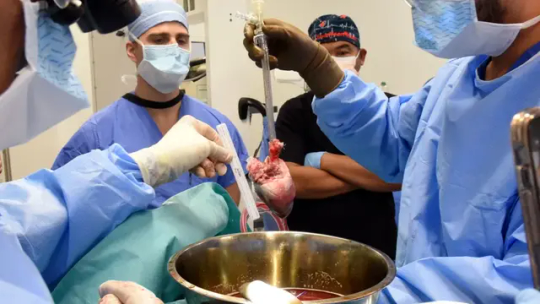
Groundbreaking Pig Heart Transplant is Performed for the Second Time
For the second time ever, a pig heart has been transplanted into a living human recipient, the University of Maryland Medical Center announced on Friday.
The groundbreaking surgery was done on September 20 at UMMC by the same transplant team that preformed the first such experimental surgery in 2022.
In a news release, the hospital said the recipient, 58-year-old Lawrence Faucette, “is currently breathing on his own, and his heart is functioning well without any assistance from supportive devices.”
Faucette had end-stage heart disease. He had pre-existing peripheral vascular disease and complications with internal bleeding making him ineligible for a traditional heart transplant, the hospital said in the release. He was admitted to UMMC on September 14 after experiencing symptoms of heart failure.
“My only real hope left is to go with the pig heart, the xenotransplant,” Faucette told the hospital in an internal interview several days before the surgery.
The experimental xenotransplant surgery was green lit under the US Food and Drug Administration’s “compassionate use” program. According to the FDA, the program is “a potential pathway for a patient with a serious or immediately life-threatening disease or condition to gain access to an investigational medical product (drug, biologic, or medical device) for treatment outside of clinical trials when no comparable or satisfactory alternative therapy options are available.”
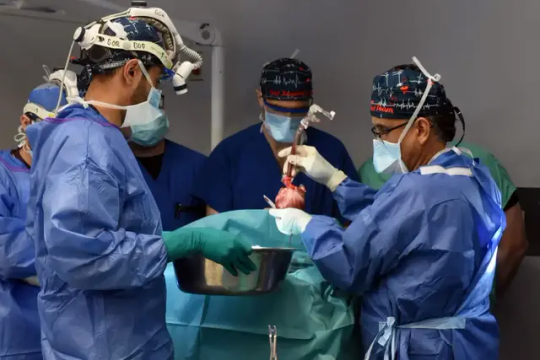
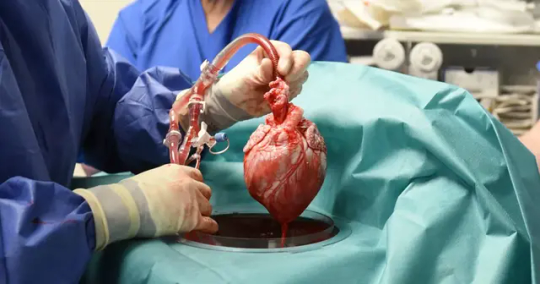
The pig heart used came from a genetically modified pig from Revivcor, a subsidiary the United Therapeutics Corporation. The pig had 10 genes edited, including three genes “knocked out” or inactivated to eliminate the alpha gal sugar in the pig’s blood cells, which can trigger a severe reaction in the human immune system, causing organ rejection. An additional pig gene was modified to control for the growth of the pig’s heart while 6 human genes were added into the pig’s genome to increase acceptance by the immune system. The FDA first approved the gene edited pigs in 2020 for potential therapeutic use and consumption.
Doctors are also treating Faucette with an experimental antibody treatment to further suppress the immune system and prevent rejection. He will be closely monitored for any signs of rejection or any development of pig related viruses. The donor pig was also closely screened for any signs of virus or pathogens.
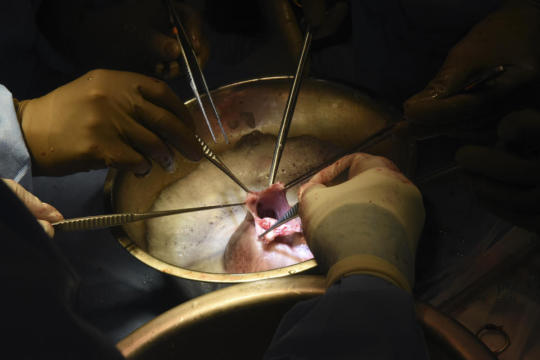
“We are once again offering a dying patient a shot at a longer life, and we are incredibly grateful to Mr. Faucette for his bravery and willingness to help advance our knowledge of this field,” said Dr. Bartley Griffith, in the release. Griffith is the surgeon who performed the transplant and is a professor of surgery at the University of Maryland School of Medicine.
The hospital said Faucette fully consented to the experimental treatment and was informed of all the risks. In addition, he underwent a full psychiatric evaluation and discussed his case with a medical ethicist.
According to the hospital’s news release, Faucette is a married father of two from Frederick, Maryland and a 20-year Navy veteran who had most recently worked as a lab technician at the National Institutes of Health before retiring.
“We have no expectations other than hoping for more time together,” said his wife Ann Faucette, in the release. “That could be as simple as sitting on the front porch and having coffee together.” There are currently no clinical trials that utilize pig organs for transplants in living human beings. The University of Maryland performed the first such experimental surgery on 57-year-old David Bennett in January 2022. Bennett died two months following the surgery.
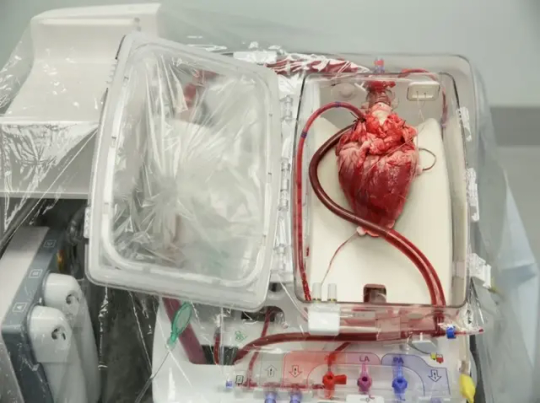
While there were no signs of rejection in the initial weeks following the transplant, an autopsy concluded that Bennett ultimately died of heart failure from “a complex array of factors,” including Bennett’s condition prior to the surgery. Bennet had already been hospitalized and kept on a heart lung bypass machine for 6 weeks prior to the transplant. However, a case study by the doctors published in the Lancet also noted there was evidence of pig virus that had not been identified previously.
According to the federal government, there are more than 113,000 people on the organ transplant list, including 3,354 people in need of a heart. The group Donate Life America says that 17 people die each day waiting for a donor organ.
By Nadia Kounang,

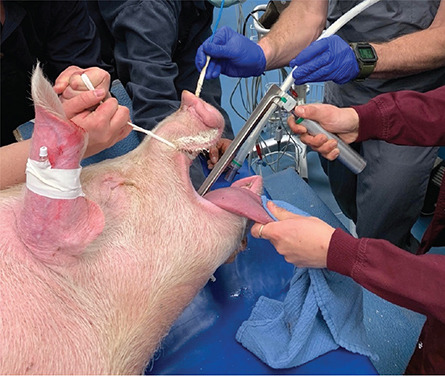
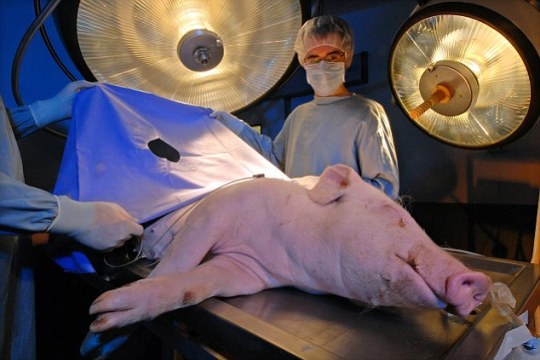
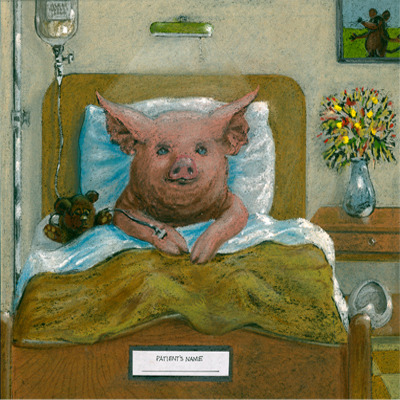
#Groundbreaking Pig Heart Transplant is Performed for the Second Time#The University of Maryland Medical Center#Lawrence Faucette#heart#pig heart#heart transplant#organ transplant#xenotransplant#animals#strange#stranger things#science#science news
20 notes
·
View notes
Text


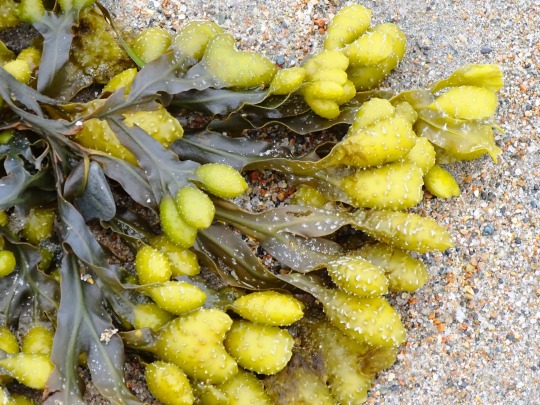
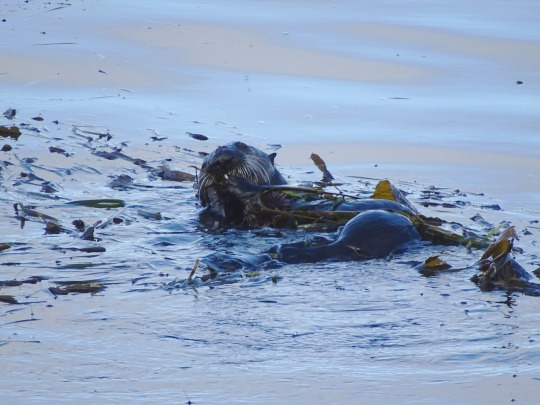
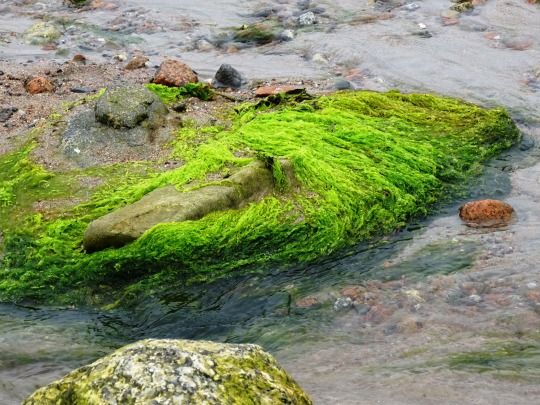
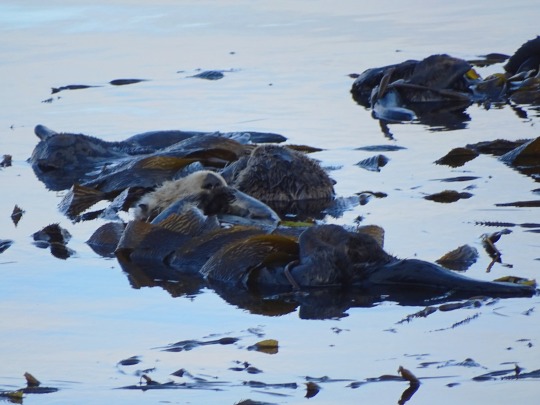
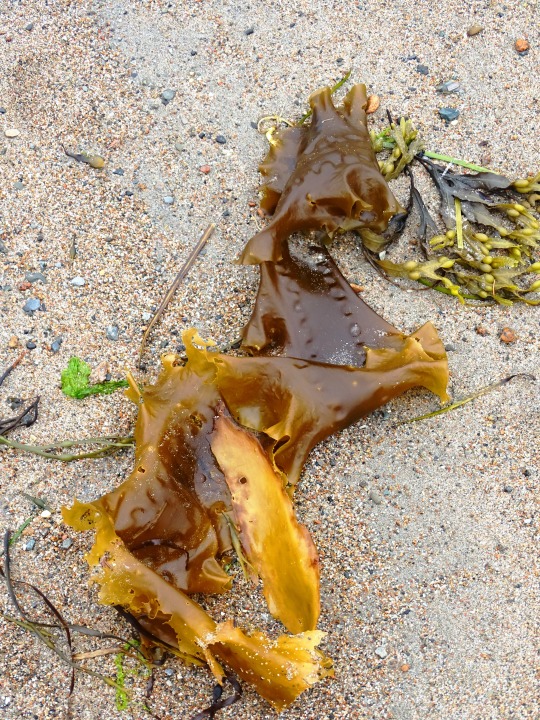
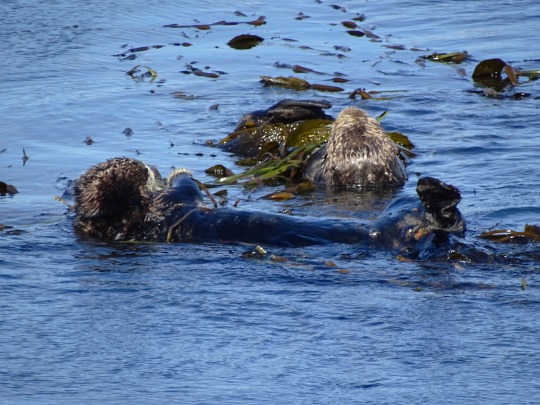
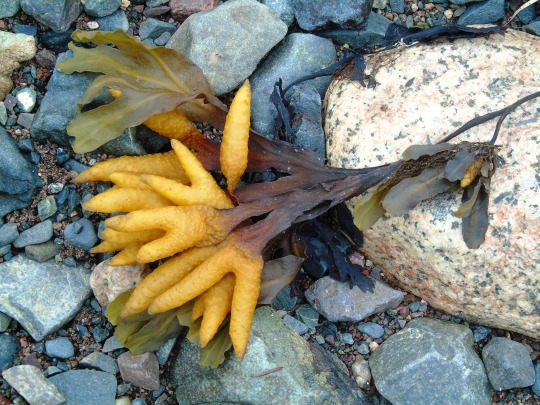

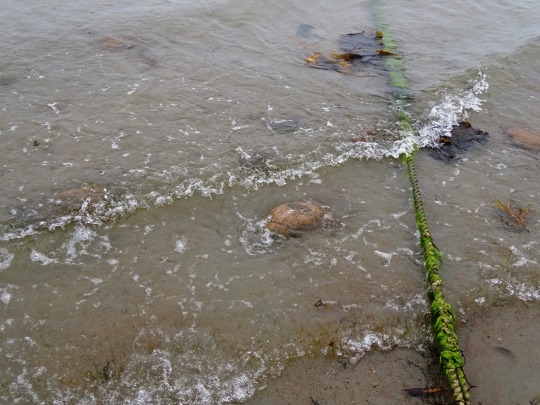
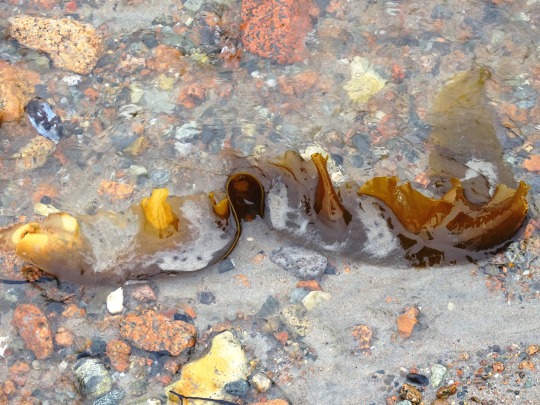
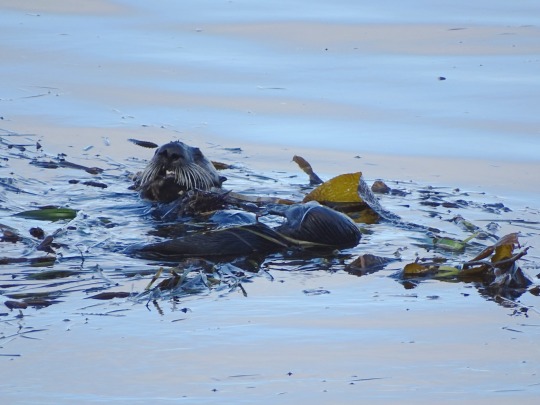
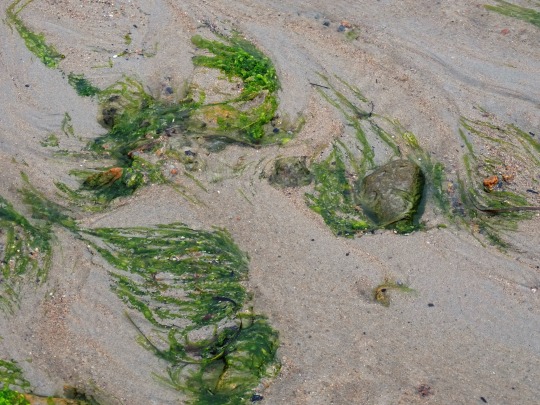
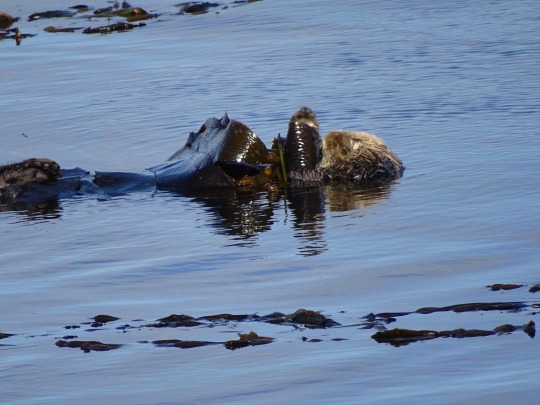
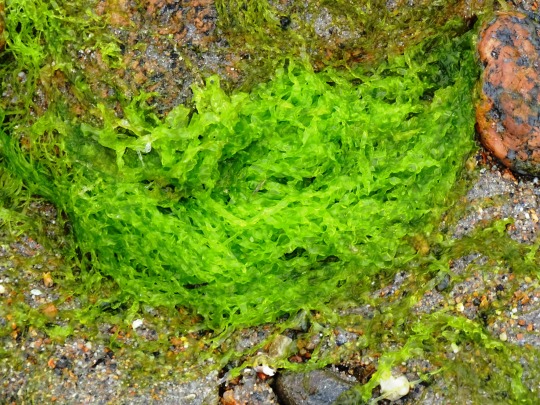
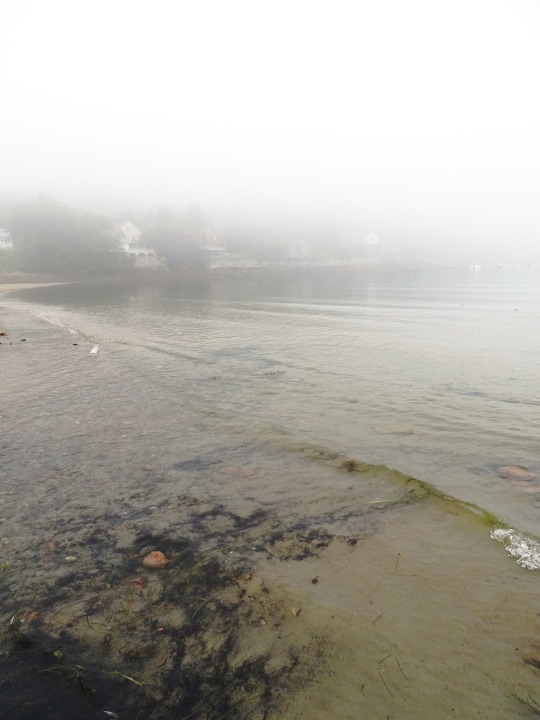
World Seagrass Day
World Seagrass Day is celebrated annually on March 1 to raise awareness about seagrass and its important functions in the marine ecosystem. It was declared by the United Nations General Assembly on May 22, 2022, following a resolution passed by Sri Lanka to emphasize the conservation of seagrass in marine environments. Seagrass is a flowering marine plant present along coastlines worldwide, acting as a crucial source of food for marine life and helping stabilize water quality.
History of World Seagrass Day
Seagrass serves an important role in maintaining the marine ecosystem. Except for Antarctica, various types of seagrass are found on coastlines around the world. From the common eelgrass, shoal grass, star grass, and the like, seagrass provides an important source of food for marine life. It also supplies crucial environmental, social, and economic benefits.
Seagrass evolved around 100 million years ago when most plant life was still found underwater. Over the course of its evolution, it has adapted to living and reproducing in various marine environments, bending and swaying with currents and dispersing its pollen through the water.
Fish, turtles, manatees, plankton, and even sharks get their sustenance from seagrass, among other things. Seagrass also acts as nursery habitats for commercially harvested fish and helps improve the water quality of the environment it inhabits. There are currently 72 recorded types of seagrass in the world, covering an area of around 300,000 square kilometers in 159 countries.
Seagrass sediments contain between 4,200 and 8,400 Tg of organic carbon, which is nearly twice the amount of carbon per area compared with land soil. With the advent and ongoing process of climate change, seagrass’ role as a carbon deposit is much more crucial today, to help sustain sea life and its ecosystem. For one, it stores up to 18% of the world’s oceanic carbon, which is greater than the percentage stored by rainforests. This function makes it a key influence in battling the effects of climate change.
As with most marine resources, seagrass is currently under threat by human activity. A United Nations report stated that up to 7% of seagrass marine habitats are being wiped out worldwide every year; this is equivalent to a football field of seagrass lost every 30 minutes.
This emergency compelled the United Nations, following a resolution by Sri Lanka, to declare a formal World Seagrass Day, to raise awareness on preserving and conserving seagrass around the world. The commemoration was formally announced in 2022.
World Seagrass Day timeline
100 Million Years Ago Seagrass’ Evolution Begins
Seagrass begins to evolve from terrestrial plants.
1930s A Disease Ravages
Up to 90% of all eelgrass in temperate North America is wiped out after succumbing to a mold-like disease, causing the extinction of a type of sea snail.
2014 Restoration Efforts Succeed
Around 7.65 million seagrass seeds are planted along the coast of Virginia, U.S., resulting in the growth of up to 6,195 acres in one of the most successful seagrass restoration efforts.
2022 World Seagrass Day is Initiated
The United Nations declares March 1 as World Seagrass Day.
World Seagrass Day FAQs
Where is the largest seagrass plant in the world?
The world’s largest seagrass plant — which is the size of 28,000 football fields — is located in Western Australia.
What is the difference between seagrass and seaweed?
The main difference is that seagrass has roots, stems, and leaves, while seaweed does not. Seagrass is considered a vascular plant, while seaweed is more of a collection of multicellular algae.
What are the most common human uses of seagrass?
Humans use seagrass to fertilize fields, insulate houses, thatch roofs, weave and hold furniture together, fill mattresses and car seats, e.t.c. Additionally, seagrass supports the commercial fishery industry while also helping absorb carbon dioxide from the atmosphere.
How to Observe World Seagrass Day
Read about seagrass
Support seagrass charities
Visit the shore
What better way to learn about seagrass, its role, and its plight than to read a material written by the experts? Read articles, books, and reports by marine scientists, conservation foundations, and similar institutions to broaden your knowledge of seagrass.
Support and/or donate to seagrass conservation efforts worldwide. These include such organizations as Project Seagrass and The Ocean Foundation’s SeaGrass Grow program. Your support makes all the difference.
Travel to the coast and bask in the seagrass-covered waters. Hang out at the beach, swim in the ocean, and see what kinds of seagrass are there. After all, seagrass helps make the view picturesque and natural.
5 Important Facts About Seagrass
Millions depend on seagrass underwater
An effective carbon absorber
The sun gives life to all
The efficacy of seagrass
An emergency situation
Seagrass provides a habitat and food for almost 70% of all sea life, from manatees and sea turtles to shellfish and plankton.
Seagrass is able to absorb carbon up to 35x faster than the Amazon Rainforest.
Like all grassy plants, seagrass needs an ample amount of sunlight to survive, thus making it most visible in sunnier climates and greater depths.
A football field’s worth of seagrass is able to absorb 7,500 miles worth of automobile pollutants and treat sewage from 780 people.
At least 35% of seagrass worldwide has been lost or degraded in the past 40 years, further accentuating the need for conservation.
Why World Seagrass Day is Important
Seagrass keeps the world running
Seagrass is reliable
It spares us the thought of environmental dysfunction
Seagrass plays an important role in maintaining both marine and human ecosystems. Its function as a carbon sink helps absorb carbon particles from the surface and from the sea, which helps improve the quality of the water and lives of those who live around it.
Aside from its environmental benefits, seagrass also contributes to the economy. Businesses that rely on seagrass for their work benefit from its abundance and quality. Fish that are caught in seagrass-rich environments tend to be healthier.
Without seagrass, what would our seas look like? They would be desolate, for sure, which would affect every living thing on the planet.
Source
#kelp#sea otter#Morro Bay#Pacific Ocean#landscape#wildlife#animal#original photography#beach#nature#summer 2022#California#Pelvetia canaliculata#Canada#Newfoundland#Acadia National Park#original photogrpahy#World Seagrass Day#WorldSeagrassDay#1 March#flora#USA#Maine#Atlantic Ocean#travel#vacation#tourist attraction#landmark
7 notes
·
View notes
Text




Dr. John Meyer, The Boulder County Coroner and Forensic Pathologist.
Dr. Meyer, who conducted the initial autopsy concluded there was evidence of acute trauma but not ongoing prior/chronic sexual abuse. The day of the autopsy, he called a medical specialist from Children’s Hospital in Denver [Dr. Sirotnak] to help examine JonBenét’s body. Both agreed that there had been penetration but no rape, and there was no evidence of prior violation.
Dr. Michael Dobersen, Coroner, Forensic Pathologist
"Page 4 of the autopsy report provides a detailed description of the external genitalia of JonBenet Ramsey. This description is consistent with acute injury which was sustained a short time prior to her death. No reliable evidence of chronic injury was found. It should be noted that irregularities of the hymenal ring cannot be reliably used to indicate chronic abuse. Microscopically, the vaginal mucuso showed evidence of vascular congestion and focal epithelial erosion. Focal interstitial chronic inflammation once again, does not necessarily indicate previous sexual abuse."
Dr. Leon Kelly, Deputy Chief Medical Examiner in El Paso, Colorado. Expert on abused children.
"The exam reveals no evidence of healing, or prior injuries. No evidence of scarring. No evidence of other changes or findings which forensic pathologists look to to indicate prior sexual abuse.
Much has been made about a few lines of information where the pathologist describes some chronic inflammation. Some have extrapolated that to mean 'well, we've got chronic injury, therefore we've got chronic sexual abuse.' In fact, that's not what those few words of text mean. Vaginitis, which is a very nonspecific term for inflammation, is very common in children and can be due to things as simple as irritation from soap or poor wiping. So common to the point that it's essentially a normal finding. And to extrapolate someone else's guilt as far as inflicting sexual abuse, that's not based in science."
Some of the "experts" called to weigh in who believe there WAS sexual abuse weren't pathologists.
Dr. Henry Lee, Dr. Werner Spitz
Dr. Richard Krugman, dean of the University of Colorado School of Medicine and a nationally known child-abuse expert. Director of the Kempe Child Abuse Center [Krugman]. Dr. Richard Krugman is one of the preeminent experts and scholars in the field of child abuse and neglect in this country and a protégé of Dr. Kempe himself.
Evidence of "mild trauma" around the vagina "is not diagnostic of sexual abuse," Krugman said. The vaginal injuries can be caused by trauma such as an infection, irritation from a bubble bath or in connection with abuse.
Krugman was asked by Boulder District Attorney Alex Hunter to consult on the Ramsey case. He studied the full autopsy report and several other documents.
Krugman said he told Hunter basically what he said Monday, that "there is nothing here that is specific that this was a child who was sexually abused." Instead, Krugman said, "I see a child who was physically abused and is dead."
(“is a sign of trauma, [but] it’s not a sign of sexual abuse necessarily.”)
COSSACK: Why were you not able to say with certainty about a sexual abuse case, Doctor?
KRUGMAN: Well for one to know with certainty that sexual abuse occurred that night I think one would need some forensic evidence that I'm not sure is available. I haven't seen any certainly to make me feel that way. There are a lot of people around the country who have from afar or even from looking at the autopsy said they are certain she was sexually abused. The problem is that children who are sexually abused may or may not have any physical findings. The reason I wouldn't say with certainty that she was or wasn't is because at least 40% of children have absolutely no physical findings and they are being sexually abused; whereas children who have some physical findings around the genital area, may have been physically abused or may have been sexually abused. And I saw nothing to let me know with certainty that sexual abuse was here in this particular case that particular night.
COSSACK: Doctor you made a statement which almost made it sound though that you believe that the sexual abuse was a coverup to perhaps hide the amount of physical abuse. Do you have a feel on that area?
KRUGMAN: In my view that's certainly a possibility.
COSSACK: Well why would you suggest that it is a coverup? I mean, what is there to suggest sexual abuse being a coverup to perhaps hide physical abuse?
KRUGMAN: Well let's again be careful of our terms. There was a lesion an abrasion on the hymen. That may have been part of sexual abuse. That may have been part of physical abuse. That may have been part of a coverup. I just don't see enough things in the autopsy to say with certainty what happened. And I think the main problem we have with this case and in this country is that we are using the wrong system that is the criminal justice system to try to deal retrospectively with a problem like child abuse, which is an enormous public health problem and has killed over 2,000 other children anonymously since JonBenet died.
Krugman was asked by Boulder District Attorney Alex Hunter to consult on the Ramsey case. He studied the full autopsy report and several other documents.
Krugman said he told Hunter basically what he said Monday, that "there is nothing here that is specific that this was a child who was sexually abused." Instead, Krugman said, "I see a child who was physically abused and is dead."
Thomas Henry, MD, Coroner, Chief Medical Examiner for the City of Denver,
From what is noted in the autopsy report, there is no evidence of injury to the anus, there is no evidence of injury to the skin around the vagina, the labia. There is no indication of healed scars in any of those areas. There is no other indication from the autopsy report at all that there is any other previous injuries that have healed in that area.
Dr, Andrew P. Sirotnak, Child Abuse Pediatrics.
"My scholarly work is focused on the effective treatment of child abuse trauma, the education of professionals to help them identify and prevent abuse in clinical practice, and on advocacy for all effected by the issues of child maltreatment."
Dr. Sirotnak along with the coroner, [Meyer], a forensic pathologist examined the body of JonBenet and agreed that there had been penetration but no rape, and there was no evidence of a prior violation.
Dr. Francesco Beuf, M.D. Pediatrician
Jon Benets pediatrician. No evidence of prior sexual abuse.
Books:
Lawrence Schiller, "Perfect Murder, Perfect Town."
The FBI believed that JonBenet's vaginal trauma was not consistent with a history of sexual abuse, and they had turned up no evidence of any other type of abuse. The sexual violation of JonBenet, whether pre or postmortem did not appear to have been committed for the perpetrators gratification. The penetration, which caused minor genital trauma, was more likely part of a staged crime scene intended to mislead the police.
Paula Woodward, "We Have Your Daughter"
Even though JonBenét’s pediatrician [Francesco Beuf], the Boulder County Coroner [John Meyer], an expert from Denver’s Children’s Hospital [Andrew Sirotnak] and the Director of the Kempe Child Abuse Center in Denver [Richard Krugman] had stated there had been no ongoing sexual abuse of the child (BPD Reports #9-110, #26-182), two new stories were deliberately put into motion just when momentum on the case publicity had begun to abate. The stories were about incest. (p. 187)
The Boulder Police Department initially suspected John of incest, but there was no prior evidence for that, according to JonBenet's pediatrician [Beuf], the coroner [Meyer] and the specialist he brought in from Children's Hospital in Denver [Sirotnak], and the director of the Kempe Child Abuse Center [Krugman]. (p. 232)
Did Patsy learn John was assaulting their daughter that night and hit her daughter for this reason? Not according to the evidence. JonBenet's pediatrician [Beuf], the coroner [Meyer] and a colleague of the coroner with firsthand knowledge of JonBenet's physical condition [Sirotnak] all said there had been no ongoing sexual abuse. (p. 313)
The coroner [Meyer], a forensic pathologist, was specifically trained in examining bodies in suspicious circumstances. The day of the autopsy, he called a medical specialist from Children’s Hospital in Denver [Sirotnak] to help examine JonBenét’s body. Both agreed that there had been penetration but no rape, and there was no evidence of prior violation. (p. 381)
Paula Woodward: Add'l comment in reference to Mark Beckners false statements on his AMA.
Both of these answers from Beckner are false. No physician who examined JonBenet's body or consulted with the Boulder County Coroner said she had been sexually violated other than during the time period when she was killed. The coroner who conducted the autopsy wrote about her genitalia: "The upper portions of the vaginal vault contain no abnormalities. The prepubescent uterus measures 3 x 1 x 0.8 cm and is unremarkable. The cervical os contains no abnormalities. Both fallopian tubes and ovaries are prepubescent and unremarkable by gross examination." (p. 381)
0 notes
Text
Prolonged standing at work can cause health problems too.
As an employee of the Planet Fitness team I have gained experience that will guide me in my professional endeavors moving forward. I am grateful for the opportunity as well as getting to work with some amazing people. Over the last few months I have been experiencing foot pain while standing at the desk and found that I was only able to sit down with a doctor's note, and even then I experienced grief from my employers. I think it's important that businesses know and understand that prolong standing at work can be just as harmful as prolonged sitting. Research on the health risks of prolonged sitting at work have been prominent in the headlines recently, but there are new studies that also highlight the hazards of prolonged standing at work. I want businesses to take the necessary steps and provide a healthy working environment for their employees. I'm not just speaking for me but for all workers who are forced to prolonged standing, I believe we can do better!
: Published in the National Library of Medicine. Thomas Waters and Robert Dick concur that Prolonged standing at work has been shown to be associated with a number of potentially serious health outcomes, such as lower back and leg pain, cardiovascular problems, fatigue, discomfort, and pregnancy related health outcomes. The purpose of this article was to provide review of the health risks and interventions for workers and employers that are involved in occupations requiring prolonged standing. A brief review of recommendations by governmental and professional organizations for hours of prolonged standing is also included.
A number of studies have been conducted examining potential biomechanical indicators of risk of Low Back Pain due to prolonged standing. Researchers have suggested that risk of low back pain is increased due to excessive co-activation of muscles and involved in postural stability during prolonged standing. Prolong standing results in a significant increase in co-activity of the gluteus medius muscles, a muscle group that serves to stabilize the pelvis during standing by abducting, medial rotating and laterally rotating the thigh at the hip. LBP is just one example of the many issues with prolonged standing. A number of studies have investigated the effects of prolonged standing on cardiovascular health outcomes. The measures studied have included carotid arteriosclerosis, leg edema, orthostatic symptoms and venous diseases. There seems to be agreement among the studies that prolonged standing plays a significant and potentially dangerous role in the development of vascular problems for workers who must stand for long periods during the work day. Whether these exposures lead to long-term chronic leg problems is not clear, but acute health effects clearly should be prevented to the extent feasible.
There are many effective ways in which these health issues can be avoided or reduced, one example being sit/stand workstations. A number of national guidelines have suggested that sit/stand chairs with or without footrests/foot rails and/or adjustable workstations should be used for workers who must work in jobs requiring prolonged standing during the work shift. They are known as ergonomic chairs and they are helpful in properly aligning with the user's individual needs. With the correct installation they help the user maintain a neutral body position to achieve comfort. Planet Fitness is committed to providing comfort and satisfaction to its members, ergonomic chairs will set their employees up for success!
Katie Pierce of CrmXchange writes about the important relationship between employee wellbeing and customer service. A positive attitude and disposition are crucial in customer service. Enthusiastic employees relate positively with customers and are more likely to be more helpful in resolving customer issues. When employee well-being is taken care of, you can expect your employees to provide a higher standard of customer service. When employees feel that their needs are met at all levels, they feel valued and competent. They think it is the right job for them, allowing them to be more involved and engaged in their jobs.
If employee well-being is central to your company culture, it can attract competent and skilled customer service candidates. You are also highly likely to retain your existing employees. Focusing on employee well-being translates to increased productivity and performance, higher employee morale, and overall positivity in the workplace. A well-thought-out employee well-being strategy must be in place to maintain good customer service performance.
It's important to remember that prolonged standing at work causes health issues such as LBP and cardiovascular problems. Businesses can take the necessary precautions in preventing these issues such as providing sit/stand workstations or ergonomic chairs. When employees feel that their needs are met at all levels, they feel valued and competent. Enthusiastic employees relate positively with customers and are more likely to be more helpful in resolving customer issues. When employee well-being is taken care of, you can expect your employees to provide a higher standard of customer service. Based on the evidence presented, I’m hoping the Planet Fitness headquarters will take into consideration these recommendations I have provided them.
References Waters, Thomas R, and Robert B Dick. “Evidence of Health Risks Associated with Prolonged Standing at Work and Intervention Effectiveness.” Rehabilitation Nursing : The Official Journal of the Association of Rehabilitation Nurses, U.S. National Library of Medicine, 2015, pmc.ncbi.nlm.nih.gov/articles/PMC4591921/. “Prolonged Standing at Work Can Cause Health Problems Too.” Medical News Today, MediLexicon International, www.medicalnewstoday.com/articles/296769#Younger-and-older-workers-affected. Accessed 6 Nov. 2024. “Prolonged Standing at Work.” Centers for Disease Control and Prevention, Centers for Disease Control and Prevention, blogs.cdc.gov/niosh-science-blog/2014/12/09/standing/. Accessed 7 Nov. 2024. Nursing@Georgetown. “Sitting or Standing: Tips for Treating Your Body Well at Work.” GU-MSN, 22 Dec. 2021, online.nursing.georgetown.edu/blog/sitting-or-standing-youre-at-risk/. Government of Canada, Canadian Centre for Occupational Health and Safety. “Office Ergonomics - Sit/Stand Desk.” Canadian Centre for Occupational Health and Safety, 10 May 2024, www.ccohs.ca/oshanswers/ergonomics/office/sit_stand_desk.html. Pierce, Katie. “The Relationship between Employee Wellbeing and Customer Service.” CRMXchange Your Gateway to Enhancing the Customer Experience, Cyber M@rketing Services,
0 notes
Text
An Overview of Bric Topical Absorbable Hemostat Procedures Market: Trends and Insights
The BRIC (Brazil, Russia, India, and China) topical absorbable hemostat market plays a vital role in surgical interventions and wound management, reflecting the growing healthcare infrastructure and surgical procedural advancements in these emerging economies.

For more insights on the BRIC Topical Absorbable Hemostat Procedures market forecasts, download a free sample report
Topical absorbable hemostats are used to control bleeding during surgeries, offering an effective, bioabsorbable alternative to traditional methods such as sutures and electrocautery.
1. Market Dynamics
Increasing Surgical Volumes
The rise in surgical procedures for trauma, cardiovascular diseases, cancer, and orthopedic conditions is driving the demand for topical absorbable hemostats.
BRIC countries are experiencing a surge in healthcare utilization due to an aging population and the growing prevalence of lifestyle diseases.
Government Healthcare Initiatives
Significant government investments in healthcare infrastructure across BRIC nations are improving access to surgical treatments, fueling market growth.
Public awareness campaigns on surgical care and bleeding management are also contributing to the adoption of advanced hemostatic products.
Shift Towards Minimally Invasive Surgeries
The preference for minimally invasive procedures, which require precise and effective bleeding management, is increasing the adoption of topical absorbable hemostats.
2. Key Trends
Adoption of Advanced Hemostatic Products
New-generation hemostats that offer rapid absorption, biocompatibility, and ease of use are gaining traction, especially in high-volume hospitals.
Localized Manufacturing
To reduce costs and improve supply chains, local manufacturing in India, China, and Brazil is expanding, with many companies partnering with global leaders for technology transfer.
Growth in Outpatient and Day Surgeries
Outpatient and day surgery procedures are increasing in BRIC nations, further driving the need for fast-acting and efficient hemostatic agents.
Focus on Biodegradable and Natural Products
Eco-conscious healthcare providers are favoring products made from collagen, gelatin, and oxidized regenerated cellulose, which align with sustainability goals.
3. Regional Insights
Brazil
A leading market in Latin America for surgical procedures, driven by public healthcare system reforms and the increasing adoption of modern surgical techniques.
Cardiovascular surgeries and trauma care dominate the application of topical absorbable hemostats.
Russia
The Russian market is characterized by government investments in modernizing healthcare facilities and improving access to advanced surgical care.
Neurosurgery and oncology-related procedures are key drivers of demand.
India
India’s market is experiencing rapid growth due to its booming medical tourism industry and the availability of affordable healthcare services.
The increasing prevalence of chronic diseases and injuries is contributing to the demand for surgical solutions like absorbable hemostats.
China
The largest market within the BRIC group, China benefits from its expansive healthcare infrastructure and focus on innovation.
Significant advancements in laparoscopic and robotic surgeries are boosting demand for high-performance hemostatic agents.
4. Applications of Topical Absorbable Hemostats
Cardiovascular Surgery
Critical to managing bleeding during complex heart and vascular surgeries.
Orthopedic Surgery
Used for joint replacements, spinal surgeries, and fracture repairs.
General Surgery
Widely applied in procedures involving organ resections or trauma care.
Neurosurgery
Essential in managing bleeding in delicate brain and spinal cord surgeries.
Cancer Surgeries
Effective in surgeries with high bleeding risks, such as liver or gastrointestinal resections.
5. Challenges
Cost Barriers
High costs of advanced absorbable hemostats can limit adoption, especially in rural and underfunded healthcare facilities.
Lack of Awareness and Training
In certain regions of BRIC countries, limited awareness and lack of training among surgical teams hinder widespread adoption.
Regulatory Hurdles
Complex approval processes and inconsistent regulations can delay product launches, particularly in Brazil and Russia.
6. Future Outlook
Technological Advancements
The development of next-generation products with faster absorption rates and enhanced biocompatibility is likely to dominate the market.
Rising Healthcare Investments
Continued investments in healthcare infrastructure, particularly in India and China, will ensure strong market growth.
Local Production and Partnerships
Increased local production and strategic partnerships with global firms will enhance affordability and accessibility.
Focus on Sustainability
The demand for biodegradable and eco-friendly hemostats will drive innovation in product development.
Conclusion
The BRIC topical absorbable hemostat market is poised for robust growth, driven by increasing surgical volumes, advances in medical technologies, and rising healthcare investments. However, addressing cost and awareness barriers will be critical for maximizing the potential of this market. Companies that prioritize innovation, localized production, and strategic partnerships are well-positioned to capitalize on the opportunities within these emerging economies.
0 notes
Text
Walkathon Promotes Vascular Disease Awareness in Jamshedpur
Vascular Society of India and Tata Steel organized a walkathon to highlight the theme ‘Amputation Free World’ on National Vascular Day. Vascular Society of India and Tata Steel organized a walkathon in Jamshedpur to raise awareness about vascular diseases, highlighting the theme ‘Amputation Free World’. JAMSHEDPUR – On Sunday, August 4, 2024, the Vascular Society of India, in collaboration with…
#amputation prevention#मुख्य#community health#Featured#health awareness#Jamshedpur News#National Vascular Day#Peripheral Arterial Disease#Tata Steel#vascular diseases#Vascular Society of India#walkathon
0 notes
Text
youtube
Brain Health: Glossary and new Roadmap
On June 10th something wonderful happened, and the media hasn't paid much attention yet. On that day, the National Public Health Road Map to Maintaining Cognitive Health was released by the CDC and the Alzheimer's Association. IIN this article, I want to first share with you the 10 top actions proposed by this report, and then provide a quick click here glossary to explain the key words that you will hear more and more when discussing brain health.
On June 10th something wonderful happened, and the media hasn't paid much attention yet. On that day, the National Public Health Road Map to Maintaining Cognitive Health was released by the CDC and the Alzheimer's Association. The authors proposed a set of 44 actions to reach a lofty goal: To maintain or improve the cognitive performance of all adults accross America. This is great timing, given all the research and media attention that this field is getting, and the aging of the baby boomer population..
I want to first share with you the 10 top actions proposed by this report, and then provide a quick glossary to explain the key words that you will hear more and more when discussing brain health.
Top recommendations:
1) To ascertain how diverse groups think about brain health and its relationship with lifestyle factors. This work has already resulted in a phenomenal report on Baby boomers' attitudes towards Brain Fitness.
2) To disseminate the latest science to increase public understanding of cognitive health and to dispel common misconceptions. The discovery of lifelong neuroplasticity and neurogenesis (see glossary below) has given us a new positive view upon the human brain - This is still a concept not many know of. "Use it or lose it" and "Use It and Get More of It" needs to reach all people.
3) Help people understand the connection between risk and protective factors and cognitive health. Good lifestyle habits were superbly presented in the MacArthur study of successful aging: good nutrition, mental and physical exercise, stress management and social engagement.
4) Assess the literature on risk factors (vascular risk and physical inactivity) and related interventions for relationships with cognitive health. As Dr. Marilyn S. Albert at John Hopkins points it out: All the things that we know are bad for your heart turn out to be bad for your brain.
5) More scientific tests will be done to establish the impact of reducing vascular risk factors on lowering the risk of brain decline and improving mental function. Recent findings presented at International Conference on Prevention of Dementia are one big step in the right direction.
6) Further, more research will be conducted on other areas potentially affecting cognitive health such as nutrition, mental activity, and social engagement.
1 note
·
View note
Text











Cessation of hostilities was achieved in the Korean War when the United States, China, and North Korea sign an armistice agreement on July 27, 1953. Syngman Rhee, President of South Korea, refused to sign but pledged to observe the armistice.
National Korean War Veterans Armistice Day
Each year both America and South Korea observe National Korean War Veterans Armistice Day on July 27. This day was started as a way to commemorate and recognize the peace treaty that triggered a cease-fire in a long-standing war. The Korean War is a significant chapter in American history in which approximately 50,000 American troops died in the conflict, over 100,000 were wounded, and thousands of others were held captive as prisoners of war. On National Korean War Veterans Armistice Day we are encouraged to take some moments for reflection on the service and sacrifices of American troops during this conflict.
HISTORY OF NATIONAL KOREAN WAR VETERANS ARMISTICE DAY
The Korean War lasted for three years — from June June 25, 1950, to July 27, 1953. The service members of the war had to overcome unique risks and experiences that set them apart from previous generations of veterans. The National Korean War Veterans Armistice Day presents us with the opportunity to remember and honor the service of these men. After being colonized by Japan, the southern part of the Korean peninsula was liberated soon after World War II. With the support of the Soviet Union, communist North Korea invaded democratic South Korea in 1950. In the wake of these events, America deployed troops to support South Korea to keep the land that was truly theirs and protect the nation’s democratic interests. After three years, an armistice was signed and the two Koreas have since then remained divided.
The fighting resulted in more than 36,000 casualties for America and more than 103,000 service members were wounded in action. The US Department of Veterans Affairs says that the extremely cold climates during the Chosin Reservoir Campaign in the winter of 1950 posed serious risks to those serving and accounted for more than 5000 American deaths. The temperatures dipped to 50 degrees Fahrenheit with a wind chill of -100 degrees Fahrenheit! This meant that the Korean War veterans are more likely to face health issues such as trauma to the nervous system, skin, and muscles, vascular conditions, foot-related injuries such as trench foot, frostbite scars, and skin cancer as compared to veterans of other wars. These veterans may have also been exposed to hazardous substances such as asbestos, polychlorinated biphenyl, and ionizing radiation during this long war. These substances are responsible for certain illnesses and cancers long after exposure. In fact, the nature of this exposure can be so serious that may be passed down to the next generations.
NATIONAL KOREAN WAR VETERANS ARMISTICE DAY TIMELINE
1894–1895
First Sino-Japanese War
Imperial Japan destroys the influence of China over Korea to usher in the short-lived Korean Empire
1948
First Socialist Uprising
Guerrillas profess support for the North Korean government in April 1948.
1945
National Liberation Day of Korea
South and North Korea commemorate the end of 35-year Japanese colonial rule.
1950
North Korea Invades South Korea
North Korea’s Korean People's Army forces cross the border and drive into South Korea on 25 June.
NATIONAL KOREAN WAR VETERANS ARMISTICE DAY FAQS
How many Korean War veterans are still alive in 2019?
As many as two million Korean War veterans are still alive as of 2019.
Is there a Korean Veterans Day?
National Korean War Veterans Armistice Day or Korean Veterans Day is observed each year on July 27. The day honors the sacrifices of Korean War veterans and their families.
Do Korean War veterans get a pension?
Korean War Veterans may be eligible for a wide variety of benefits available to all American military veterans. These benefits include disability compensation, pension, education and training, health care, home loans, insurance, vocational rehabilitation and employment, and burial.
HOW TO OBSERVE NATIONAL KOREAN WAR VETERANS ARMISTICE DAY
Donate to organizations: Many organizations help in the treatment and rehabilitation of army veterans. You can either volunteer your time or donate funds to these organizations.
Brush up on your history: Today is a great day to brush up on American history. You can read books, newspaper clippings, or digital archives of the Korean War. Reading is a great way to learn more about the war and the events leading up to it.
Visit a veteran: Do you know a veteran who served in the Korean War? You can take some time off your day to go visit them. Surprise them with a meal or take them out for a movie.
5 FACTS ABOUT THE U.S. ARMY THAT WILL BLOW YOUR MIND
It’s one of the biggest recruiters: The U.S. Army employs over a million people.
Dogs are an important part of it: Presently, around 500 dogs are serving in the U.S. Army.
It has many military bases: It has 800 military bases and these bases are spread over 74 countries.
The presidents have served, too: As many as 16 U.S. presidents have served in the U.S. Army
The army is older than the country: George Washington created the Continental Army in 1775.
WHY NATIONAL KOREAN WAR VETERANS ARMISTICE DAY IS IMPORTANT
It celebrates American history: The Korean War is an important part of American history. This is a great day to learn more about the country’s rich past and how it continues to affect the present.
A way to say thanks: This is also a day to say thanks to all the brave servicemen who have made the ultimate sacrifice for America. The day recognizes the achievements of veterans and those who continue to serve in the army.
Celebrates international unity: The Korean War celebrates the triumph of democracy. It shows how great nations can come together to protect the rights of their people. National Korean War Armistice Day is ultimately the celebration of a global kinship.
Source
#National Korean War Veterans Armistice Day#Korean War Monument by Vincent R. Courtenay#Ottawa#Korean War Veterans Memorial#travel#usa#original photography#vacation#tourist attraction#landmark#cityscape#architecture#Frank Gaylord#National War Memorial by Vernon March#Community Veterans Memorial#Munster#Indiana#Korean War Monument by Omri Amrany#Korean War#armistice#27 July 1953#anniversary#US history
2 notes
·
View notes
Text
Job Opening For Registered Nurse (RN) - (Sign-On Bonus for Full-Time & Part-Time Positions, Shift-Differentials) Intuitive Health Services Job title: Registered Nurse (RN) - (Sign-On Bonus for Full-Time & Part-Time Positions, Shift-Differentials) Job description: The Impact You Can MakeGlens Falls Hospital is seeking dedicated and compassionate Registered Nurses to join our team! This opportunity will allow you to make a positive impact on the lives of our patients while advancing your career in a supportive and collaborative environment.Team ImpactIn this position, you will be an important member of the patient care team. The Registered Nurse (RN) is accountable for management and delivery of patient care to assigned patients in collaboration with the interdisciplinary team, and within the scope of practice delineated in the New York State Nurse Practice Act. Provides direct patient care, delegates/assigns responsibility as appropriate to others, and serves as leader of the interdisciplinary team in collaboration with and under the direction of the attending physician. The patient care team identifies desired outcomes for each patient based on assessment data, and plan of care and completes ongoing assessments to facilitative achievement of desired outcomes. Some highlights about this opportunity include: Full time, part time, and per diem positions available. Shifts include days, evenings, overnights, and weekend tracks. 8 and 12 hour shifts available Specialty areas include but are not limited to: Med Surge, OB, ED, ICU, PACU, OR, Telemetry, Oncology, Behavioral Health, Vascular Access, Medical Imaging, and Physicians Practice Mentorship programs and career growth pathways to support your professional aspiration Professional development and continuing education tuition reimbursement to advance your clinical skills Clinical Ladder that supports professional growth Sign on bonus Shift differentials Certification bonus The Glens Falls Hospital ImpactMissionOur Mission is to improve the health of people in our region by providing access to exceptional, affordable, and patient-centered care every day and in every setting.Glens Falls Hospital NursingGlens Falls Hospital is proud to be a Magnet designated organization, joining only 8% of all hospitals in the United States to currently hold this distinction. Magnet Recognition is the gold standard for nursing excellence.When you join Magnet Designated nursing excellence team, you will experience shared governance, engaged leadership, and skilled team members all in a family - like atmosphere.QualificationsEducation/Accredited Programs· Graduation from a Registered Professional Nursing Program.· Current Registered Nurse (RN) license in the state of New York.· Bachelor's degree in Nursing is preferred; new hires will be required to complete their BSN within 5 years of hire (RNs with 20+ years of experience may be eligible to opt for certification completion rather than BSN).Experience/Abilities· Excellent communication and interpersonal skills· Maintains competency in professional nursing practices· Knowledge of standard health care reporting measures required· Ability to recognize patient care problems and to react appropriately in patient care emergenciesCommunities We ServeLocated in the foothills of the beautiful Adirondack mountains, Glens Falls is conveniently located a short drive away from the capital region and Lake George. Work at the top of your profession and jumpstart your next career here at Glens Falls Hospital!All qualified applicants will receive consideration for employment without regard to race, color, religious creed, national origin, sex, age, gender identity, disability, sexual orientation, military service, genetic information, and/or other status protected under law.Salary Range The expected base rate for this Glens Falls, New York, United States-based position is $34.00 to $58.
74 per hour. Exact rate is determined on a case-by-case basis commensurate with experience level, as well as education and certifications pertaining to each position which may be above the listed job requirements.Benefits Glens Falls Hospital is committed to providing our people with valuable and competitive benefits offerings, as it is a core part of providing a strong overall employee experience. A summary of these offerings, which are available to active, full-time and part-time employees who work at least 30 hours per week, can be found .. Apply for the job Registered Nurse (RN) - (Sign-On Bonus for Full-Time & Part-Time Positions, Shift-Differentials) At Intuitive Health Services, our goal is to make healthcare better for everyone. We help hospitals, clinics, and other healthcare places find the right doctors, nurses, and other healthcare workers. For over 15 years, we have been doing this important job. We work with places like state hospitals and correctional facilities to make sure they have the best people to take care of patients. We don’t just connect people with jobs; we also support them throughout their journey. We help with things like improving resumes, preparing for interviews, and finding the job that fits best. We work in over 50 different locations and have over 900 professionals who trust us to help them. If you are looking for a job in healthcare, we are here to guide you. If you are a healthcare facility needing to hire someone, we can find the best person for you. Our team is always ready to help, and we believe that by working together, we can make healthcare stronger and better for everyone. If you need to contact us, you can find us at: Address: 520 West Lacey Blvd, Hanford, CA 93230 Email: [email protected] Phone:+1 (805) 703-3729 We’re here to help you with all your healthcare staffing needs! https://intuitivehealthservices.com/register
0 notes
Text
Norwegian nutrition policy
So, I actually managed to start studying. I am from Norway so everything about nutrition I write here is based on studies Norway and other nordic countries have done. Also all my information is coming from my professors presentations. Here is what I have learned:
The focus on food have changed a lot over the years in Norway. In the 1800s the focus was on getting enough food to grow the population. In the 1900s vitamins were discovered and there was more focus on nutrition. In 1950-60s diet surveys showed that there was a correlation between consumption of fat and heart and vascular diseases. Today there is an increase in lifelong health conditions. So, Norway has a nutrition policy to combat this.
Where did the policy come from? It comes from many years of effort from both Norway and other countries. These are the different organizations that have influenced the Norwegian nutrition policy: Food and agriculture organization of the United Nations, the World health organization, the world food conference (UN), and more.
The general goals of the Norwegian nutrition policy are:
Reduce health related health issues
Make sure food is good for the health and safe to eat
Contribute to a diet that consumers find satisfactory and contribute to sustainable food production.
Norway’s action plan is:
“Healthy diet, taking pleasure in food and great health for all”
Diet, food and meals are important for health and well-being, and are an important part of the day. In Norway the studies show that un-health diets together with high blood pressure and tobacco kills most people. A part of the action plan is to contribute to the UNs sustainability goals. The action plan will contribute to a healthy diet to promote health and prevent diet-related diseases. The measures are targeting the entire population with special attention to children, young, families with children and elders.
There are five measures:
Enjoying food and a healthy diet
Create good eating habits in kindergarten, 20 minutes lunch break in school, finding joy in eating and food care for elders, healthy options available at the workplace
Good and simple choices
Reduce salt in ready to eat meals, reduce intake of unhealthy food and promote eating healthy food. Satisfy the intake of iodine and vitamin D. environmentally friendly and sustainable practices.
Communication and knowledge
Tools and recourses for food and health in middle- and high-school. Carry on the small changes can give big results initiative. Training programs for employees in institutions, prisons and asylum reception
Food, meals and nutrition in health and care professions
Knowledge about food, meals and nutrition, promote breast-feeding, have nutrition strategies in hospitals and nutrition considerations connected to drugs.
Research, development and innovation
UNIK (Utvikling i norsk kosthold (development in Norwegian diet))
Multiple agencies are involved in the nutrition work.
Helsedirektoratet (the Directorate of Health) give national nutritional advice
Folkehelseinstituttet (public health institute)
Mattilsynet (the Norwegian Food Authority)
Vitenskapskomiteen for mat og miljø ( The Science Committee for Food and the Environment)
https://www.mattilsynet.no/mat-og-drikke/forbrukere is where you can find information about food and health from public authorities (in Norway, its in Norwegian).
Nordic Nutrition Recommendations (NNR) constitute the scientific foundations for national nutrition recommendations and food-based dietary advice. The NNR concerns Denmark, Finland, Iceland, Sweden, Norway and the Baltic countries. The NNR contains information about:
Fluid and water balance
Energy
Fat and fatty acids
Carbohydrate
Dietary fibre
Protein
Vitamins
minerals
breast-feeding
sustainability
https://pub.norden.org/nord2023-003/index.html is the link to the NNR 2023 (it’s in English)
Kostråd for å fremme folkehelsa og forebygge kroniske sykdommer (Nutrition recommendations to promote public health and prevent chronic illness) is a report made by a national council of nutrition and is the scientific base for the 13 Norwegian nutritional recommendations. They are updated (next update in August 2024). The 13 recommendations concern food and physical activity. Recommendation 1 and 2 are based on an overall assessment of diet and physical activity, recommendations 3-13 are more specifically connected to different food groups, dietary supplements and physical activity. (more about this later).
The Norwegian recommendations about diet and physical activity are published by the Directorate of Health based on the Nordic Nutrition Recommendations and the Nutrition recommendations to promote public health and prevent chronic illness report. There Norwegian recommendations include:
Nutrition recommendations
Recommendations about physical activities and sitting still
Recommendations concerning the distribution of energy giving nutrition as a part of the total energy consumption, and the consumption of dietary fibre.
Recommendations about consumptions of vitamins and minerals, salt, alcohol and dietary supplements
Reference values for energy consumption
UNIK (Development in Norwegian diet) follows the development in the population every year (more about this later).
WOOOOOO, I might have started studying almost a month later than planned, but at least I did something!!! Very proud of me. Let’s hope I manage to continue, but it’s always starting that’s the most difficult part. Wish me luck!
0 notes
Text
Sudden Stomach Pain? A Guide to Acute Abdominal Pain
In the fast-paced life of modern day, prioritizing health often takes a backseat. However, sudden abdominal pain, often dismissed as “stomachaches,” can originate from various organs or areas including the digestive system, abdominal wall, chest, pelvis, or back. Abdominal pain can be of various types.

Today, we will learn about acute abdominal pain, from Dr Amita Jain, a top laparoscopic and abdomen surgeon in India.
Abdominal pain can occur anywhere between the ribs and the pelvis and is often not a cause for concern, as most issues can be easily diagnosed and treated by a doctor.
However, acute abdomen refers to a sudden, severe abdominal pain often accompanied by nausea…
Read Here: https://www.dramitajain.com/blog/2024/05/30/laparoscopic-abdomen-surgeon-doctor-delhi/
Dr Amita Jain
Dr Amita Jain is a surgeon with highest degree of professional competence, precision and surgical craftsmanship. Performed all complicated general surgery procedures with in depth knowledge of invasive and few minimal invasive and onco surgical techniques. Underwent special training in trauma, executed various trauma-related complex life-saving neurosurgical procedures, reconstructed injured mangled limbs and performed vascular and reconstructive procedures with critical care.
Dr Amita Jain holds 28 plus years of rich experience in Trauma and General Laparoscopic Surgeries (including Gallbladder stone removal, appendix removal, hernia repair surgery, piles and fissure surgeries). She was the Professor Surgery of at the Army College of Medical Sciences and Base Hospital Delhi Cantt. In 1994 she was commissioned as Surgeon under the United Nations Mission in Congo. From 2020 to 2022, she worked with Bansals Hospital. Currently, Dr Amita Jain is the Senior Consultant, (Speciality: General and Laparoscopic Surgeon) at Artemis Lite Hospital, New Delhi
#best laparoscopic surgeon in delhi#best gallbladder surgeon in delhi#best general surgeon in delhi#best hernia surgeon in delhi#best hernia surgeon in india#best surgeon in delhi#dr amita jain#best thyroid surgeon in delhi#best laparoscopy surgeon in delhi#best piles surgeon in delhi
0 notes
Text
Expert Varicocele Treatment in India: Dr. Gaurav Gangwani's Innovative Techniques
Revolutionizing Varicocele Treatment in India: Dr. Gaurav Gangwani’s Expertise in Embolization.

Understanding Varicocele
Varicocele is a vascular condition characterized by the enlargement of veins within the scrotum, similar to varicose veins that can appear in the legs. This condition is a common cause of pain, swelling, and can affect fertility in men. Traditional treatment methods include surgical interventions, but advancements in interventional radiology have introduced more effective and less invasive options.
Dr. Gaurav Gangwani: A Trailblazer in Varicocele Treatment
Dr. Gaurav Gangwani, a renowned interventional radiologist based in Mumbai, India, is a pioneer in the treatment of varicocele using embolization techniques. Recognized for performing a high volume of varicocele treatments, Dr. Gangwani’s approach using embolization stands out not only for its efficacy but also for its minimally invasive nature, making him a preferred specialist for this treatment in India.
The Shift to Embolization
Embolization has emerged as a leading treatment for varicocele due to its less invasive nature and comparable effectiveness to surgery. Dr. Gangwani specializes in both unilateral and bilateral varicocele embolizations, handling a wide range of cases from simple to complex. His technique primarily involves the use of a glue-like adhesive substance, which has significantly shifted the treatment paradigm.
Advantages of Glue Embolization
Minimally Invasive: Unlike surgical options that may require incisions and longer recovery times, embolization is performed through a small puncture in the growing area, leading to quicker recovery and less post-operative discomfort.
Reduced Risk of Complications: By using glue instead of metal coils, Dr. Gangwani minimizes the risk of complications associated with foreign body reactions and migration, thus enhancing the safety of the procedure.
High Efficacy: Glue embolization has proven highly effective in blocking the abnormal blood flow to the varicocele, which often leads to significant improvement in symptoms and fertility outcomes.
Procedure Overview
The embolization procedure performed by Dr. Gangwani is typically done on an outpatient basis, requiring only local anesthesia. Here’s a brief overview of the process:
Preparation: The patient is prepared for the procedure under local anesthesia, ensuring comfort throughout the process.
Vascular Access: A small catheter is inserted into a vein in the groin or neck under ultrasound guidance.
Catheter Navigation: The catheter is carefully guided to the affected veins using real-time imaging techniques.
Glue Injection: Once in position, a special glue is injected to block the abnormal veins responsible for the varicocele.
Completion and Recovery: The catheter is removed, and the small puncture site is closed, usually without the need for stitches.
Recovery typically involves a brief period of monitoring before the patient can go home the same day.
Dr. Gangwani’s Impact on Varicocele Treatment in India
Dr. Gangwani’s pioneering work in varicocele embolization has positioned him as a leading figure in interventional radiology in India. His commitment to adopting and refining new techniques has not only benefited his patients directly but has also set new standards in the treatment of varicocele across the country. Patients under his care experience high satisfaction rates, given the effectiveness of the treatments and the minimal downtime involved.
Conclusion: Leading Change in Men’s Health
Varicocele treatment through embolization by Dr. Gaurav Gangwani represents a significant advancement in men’s health care in India. His innovative approach, focusing on safer and less invasive techniques, continues to benefit patients across the nation, offering them a modern solution to a prevalent health issue. Dr. Gangwani’s dedication to his field and his patients exemplifies the best of modern medicine — innovative, patient-centered, and highly effective.
0 notes
Text
Holidays 5.15
Holidays
Army Day (Slovenia)
Asphalt Day
Break the Glass Ceiling Dy
Bring Flowers to Someone Day
Bring Your Legislator to School Day (North Carolina)
Cold Sophie's Day
Constituent Assembly Day (Lithuania)
Day of Customs and Traditions (Burkina Faso)
Dinosaur Day (UK)
Discovery Day (Cayman Islands)
Do Lunch with Your Dog Day
Festival of Masks (Los Angeles)
515 Day
Flag Day (Macedonia)
Flip Your Mattress Day
Germit Day (Fiji)
Halvard Vebjornsson (Norway)
HG Awareness Day
Hyperemisis Gravidarum Awareness Day (a.k.a. HG Day)
International Conscientious Objectors Day
International Day of Ehlers-Danlos Syndrome
International Day of Families (UN)
International Fluevog Day
International Huntington’s Disease Awareness Day
International Kangaroo Care Awareness Day
International Men Can Wear Dresses Day
International MPS Awareness Day
International Mucopolysaccharidoses Awareness Day (a.k.a. MPS Day)
National Numeracy Day (UK)
International Political Coordinators Day
International Virtual Assistants Day
International Water Safety Day
Kamuzu Banda Day (Malawi)
Kan Phuetchamongkhon (Royal Plowing and Farmers Day; Thailand)
Kepler’s Law Day
Konstantineoba (Georgia)
Law Enforcement Memorial Day (Florida)
Ma’alot Massacre Anniversary Day
Miracle Monday (Superman: Miracle Monday)
Mother’s Day (Paraguay)
Nakba Day (Palestine)
National Cycling Day
National Defense Transportation Day
National Hispanic Hepatitis Awareness Day
National Pathological Demand Avoidance Day
National Pun Day
National Safety Dose Day
National Senior Fraud Awareness Day
National Stockings Day
National Stop Nausea Day
National Tuberous Sclerosis Global Awareness Day (a.k.a. TSC Global Awareness Day)
Never Turn Your Back on the Ocean Day
Nylon Stockings Day
Over the Rainbow Day
Peace Officers Memorial Day
Persian Language Day (Iran)
Relive Your Past By Listening to the First Music You Ever Bought, No Matter What It Was!, No Excuses Now Day
Republic Day (Lithuania)
Rhododendron Festival (Mentone, Alabama)
San Isidro Day (Mexico, Spain)
Shrub Day (French Republic)
Spring Astronomy Day
Straw Hat Day
Teachers' Day (Colombia, Mexico, South Korea)
Te Aso o te Tala Lei (Gospel Day; Tuvalu)
Tree Day (India)
U.S. Agriculture Day
VBF Day of Awareness (a.k.a. Vascular Birthmark Foundation Day of Awareness)
Welsh Poppy Day
World Aeronautical Informational Services (AIS) Day
World Climate Change Day
World Facilities Management Day
World Orthodontic Health Day
World Product Day
World Thrombectomy Day
World Vasculitis Day
Xenogender Visibility Day
Ziua Europei (Moldova)
Food & Drink Celebrations
Chocolate Chip Cookie Day
Hefe Day (Portland, Oregon)
National Bread Pudding Day
National Day of Pisco (Chile)
National Pizza Party Day
National Slider Day
Independence & Related Days
Gamerland (Declared; 2022) [unrecognized]
Las Vegas, Nevada (Founded; 1905)
Paraguay (Independence Day, Day 2; from Spain, 1811)
Republic of Uniland (Declared; 2018) [unrecognized]
Upper Silesia (Ceded to Poland by Germany; 1922)
3rd Wednesday in May
International Customer Support Day [3rd Wednesday]
International Trauma Survivors Day [3rd Wednesday]
National Employee Health & Fitness Day [3rd Wednesday]
National Juice Slush Day [3rd Wednesday]
National Parent Peer Support Provider Appreciation Day [3rd Wednesday]
National Playday for Health [3rd Wednesday]
National Trauma Survivors Day [3rd Wednesday]
Philly Loves PAWS Day (Philadelphia) [3rd Wednesday]
Turn Beauty Inside Out Day [3rd Wednesday]
Weekly Holidays beginning May 15 (2nd Full Week)
National EMS Week (thru 21)
National Law Week (Australia)
Festivals Beginning May 15, 2024
Aoi Matsuri (Hollyhock Festival; Kyoto, Japan)
The Great Escape Festival (Brighton, UK) [thru 5.18]
Nantucket Wine & Food Festival (Nantucket, Massachusetts) [thru 5.19]
National Association of Flour Distributors Annual Convention (St. Pete Beach, Florida) [thru 5.19]
World Championship Barbecue Cooking Contest (Memphis, Tennessee) [thru 5.18]
Feast Days
Achillius of Larissa (Christian; Saint)
Albert Dubout (Artology)
Aoi Matsuri (a.k.a. Hollyhock Leaf Crest Festival; Kyoto, Japan)
Argei (Ancient Rome) [also 3.16]
Athanasius of Alexandria (Coptic Church)
Bertha and Rupert (Christian; Saints)
Bike to Work Day (Pastafarian)
Buddha’s Birthday (Hong Kong, Macau)
Carlo Maratti (Artology)
Declutter Day (Starza Pagan Book of Days)
Dymphna (Christian; Saint) [The Insane]
Feg Murray (Artology)
Festa dei Ceri (St. Ubaldo Day, Gubbio, Italy; Feast Day 5.16)
French Fried Fairy Awareness Day (Shamanism)
Hallvard Vebjørnsson (Roman Catholic Church; Martyr)
Hesychius of Cazorla (Christian; Saint)
Hilary of Galeata (Christian; Saint)
Huldra’s Blot (Pagan)
Ides of May (Ancient Rome)
Isaias of Rostov (Christian; Saint)
Isidore of Chios (Christian; Martyr)
Isidore the Laborer, celebrated with festivals in various countries, the beginning of bullfighting season in Madrid (a.k.a. Isidore of Madrid; Christian; Saint)
Jagger Day (Church of the SubGenius; Saint)
Jasper Johns (Artology)
Jean-Baptiste de La Salle (Roman Catholic Church)
Katherine Anne Porter (Writerism)
L. Frank Baum (Writerism)
Mercuralia (Old Roman Festival to Mercury)
Over Sea, Under Stone, by Susan Cooper (Novel; 1965)
Peter, Andrew, Paul, and Denise (Roman Catholic Church; Martyrs)
Purification Rite to River God of the Tiber (Sacrifice of 27 Straw Puppets; Ancient Rome)
Ralph Steadman (Artology)
Reticius (Roman Catholic Church)
Richard Avedon (Artology)
Simivisionios (Celtic Book of Days)
Sophia of Rome, the fifth of the Ice Saints (Roman Catholic Church)
The Sublime Ms. M (Muppetism)
Torquatus and His Companions (Christian; Martyrs)
Vespasian (Positivist; Saint)
Viktor Vasnetsov (Artology)
Welcome Time Travelers Yesterday (Pastafarian)
Lucky & Unlucky Days
Taian (大安 Japan) [Lucky all day.]
Very Unlucky Day (Grafton’s Manual of 1565) [27 of 60]
Premieres
Angels & Demons (Film; 2009)
The Big Birdcast (Color Rhapsody Cartoon; 1938)
Bowling for Columbine (Documentary Film; 2002)
Bulworth (Film; 1998)
The Cactus Kid (Disney Cartoon; 1930)
Chariots of Fire (Film; 1981)
A Crown of Swords, by Robert Jordan (Novel; 1996) [Wheel of Time #7]
Custer Died for Your Sins: An Indian Manifesto, by Vine Deloria Jr. (History Book; 1969)
Dhalgren, by Samuel R. Delany (Novel; 1975)
East Side Story, by Squeeze (Album; 1981)
Electric Earthquake (Fleischer Cartoon; 1942) [#7]
Fools Afloat or All the Drips at Sea (Rocky & Bullwinkle Cartoon, S1, Ep. 50; 1960)
The Forgotten Beasts of Eld, by Patricia A. McKillip (Novel; 1974)
Gesta Danorum, by Saxo Grammaticus (Danish History; 1514)
Gigi (Film; 1958)
God Bless the Go-Go’s, by The Go-Go’s (Album; 2001)
The Great (TV Series; 2020)
Greetings Bait (WB MM Cartoon; 1943)
The Ground Floor or That’s Me All Over! (Rocky & Bullwinkle Cartoon, S1, Ep. 49; 1960)
Jungle Jive (Swing Symphony Cartoon; 1944)
The Last Picture Show, by Larry McMurtry (Novel; 1966)
Laterals, by Tool (Album; 2001)
Leave Us Chase It (Phantasies Cartoon; 1947)
Lethal Weapon 3 (Film; 1992)
Little Hiawatha (Silly Symphonies Cartoon; 1937)
Mad Max: Fury Road (Film; 2015)
The Magical Mystery Trip Through Little Red’s Head (DePatie-Freleng Animated TV Special; 1974)
Marouf, Savetier de Caire, by Henri Rabaud (Opera; 1914)
The Master and Margarita, by Mikhail Bulgakov (Novel; 1967)
The Matrix Reloaded (Film; 2003)
Neck and Neck (Terrytoons Cartoon; 1942)
One Cab’s Family (MGM Cartoon; 1952)
Pitch Perfect 2 (Film; 2015)
Porky and Gabby (WB LT Cartoon; 1937)
The Portable Dorothy Parker, by Dorothy Parker (Short Stories, Poetry; 1944)
Pulcinella, by Igor Stravinsky (Opera; 1920)
Quest for Camelot (Animated Film; 1998)
Raising Hell, by Run-DMC (Album; 1986)
Raspberry Beret, by Prince (Song; 1985)
Romance (Terrytoons Cartoon; 1932)
Royal Opera House (Opera House in Covent Garden, London; 1858)
The Runt, featuring Farmer Al Falfa (Terrytoons Cartoon; 1936)
The Time Traveler’s Wife (TV Series; 2022)
Tokio Jokio (WB LT Cartoon; 1943)
21st Century Breakdown, by Green Day (Album; 2009)
Vision of Love, by Mariah Carey (Song; 1990)
Von Ryan’s Express, by David Westheimer (Novel; 1964)
Weezer (a.k.a. The Green Album), by Weezer (Album; 2001)
Whispering Smith (TV Series; 1961)
The White Dragon, by Anne McCaffrey (Novel; 1978) [Dragonriders of Peru #3]
Wise Blood, by Flannery O’Connor (Novel; 1952)
Today’s Name Days
Hertraud, Rupert, Sonja, Sophie (Austria)
Izidor, Jakov (Croatia)
Žofie (Czech Republic)
Sophie (Denmark)
Sofia, Viia, Viiu (Estonia)
Sofia, Sohvi, Sonja (Finland)
Denise (France)
Hertraud, Sonja, Sophia (Germany)
Achilleas, Archillios, Kali, Pahomios (Greece)
Szonja, Zsófia (Hungary)
Achille, Germana, Mattia, Torquato (Italy)
Arita, Saulnesis, Sofija, Taiga (Latvia)
Algedas, Izodorius, Jaunutė, Sofija (Lithuania)
Hallvard, Halvor (Norway)
Afanazy, Atanazy, Berta, Cecyliusz, Czcibora, Dionizja, Izydor, Jan, Nadzieja, Ruprecht, Strzeżysław, Zofia (Poland)
Iacob, Pahomie (România)
Žofia (Slovakia)
Indalecio, Isidro (Spain)
Sofia, Sonja (Sweden)
Yardarm (Ukraine)
Sofia, Sonia, Sonya, Sophia, Sophie, Ward, Wardell (USA)
Today is Also…
Day of Year: Day 136 of 2024; 230 days remaining in the year
ISO: Day 3 of week 20 of 2024
Celtic Tree Calendar: Huath (Hawthorn) [Day 4 of 28]
Chinese: Month 4 (Ji-Si), Day 8 (Ji-Mao)
Chinese Year of the: Dragon 4722 (until January 29, 2025) [Wu-Chen]
Hebrew: 7 Iyar 5784
Islamic: 7 Dhu al-Qada 1445
J Cal: 16 Magenta; Twosday [16 of 30]
Julian: 2 May 2024
Moon: 50%: 1st Quarter
Positivist: 23 Caesar (5th Month) [Vespasian]
Runic Half Month: Ing (Expansive Energy) [Day 6 of 15]
Season: Spring (Day 58 of 92)
Week: 2nd Full Week of May
Zodiac: Taurus (Day 26 of 31)
0 notes